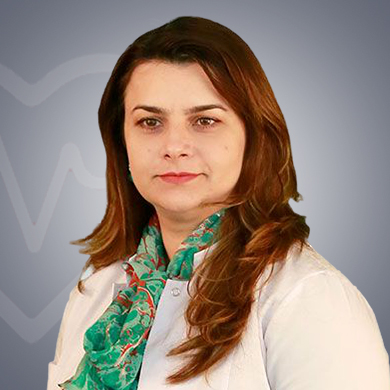
13 Years of experience
Speaks: English
Some of the conditions surgical oncologist Shahla Valizada treats are:
The goal of breast cancer surgery is to excise the tumor and a portion of the surrounding tissues while conserving the breast. Breast cancer surgery methods may vary in the amount of breast tissue which is removed with the tumor. This depends on the overall tumor location, how far it has spread, as well as one’s personal feelings. The surgeons also remove some lymph nodes under this arm so that these can be removed. This helps your doctor to plan your treatment.
There are around 200 different types of cancer and all these can cause different symptoms. The symptoms are often linked to some cancer types. The signs could also be general, including weight loss, fatigue, and unexplained pain. Cancer can produce the below-listed conditions However, symptoms might vary from person to person. Every condition has its symptoms:
Dr Shahla Valizada works from 11 am to 6 pm on all days of the week, except Sunday.
The list of popular procedures that Dr Shahla Valizada performs for cancer treatment is given below
The doctor has rich experience in performing complex cases with accuracy. The surgeon has performed a large number of procedures with a high success rate and adheres to medical protocols to ensure patient safety and speedy recovery. The specialist is proficient in using the latest techniques to perform the procedures and ensures that the patient has a speedy recovery. There are two types of cancer surgery - minimally invasive surgery and open surgery. In open surgery, a surgical oncologist makes a large incision, to remove the tumor and some of the adjacent healthy tissues. Minimally invasive surgery involves laser surgery, cryosurgery, robotic surgery, laparoscopy, cryosurgery.

Share Your Experience about Dr. Shahla Valizada

A surgical oncologist is a doctor who removes the tumor and adjacent tissues through surgery. They also perform some types of biopsies to diagnose cancer. In some cases, a surgical oncologist performs surgeries to find out parts of the body where cancer has spread. In special cases, the surgeons do preventive surgeries. Sometimes, additional treatments like chemotherapy or radiation follow surgery. In these cases, surgical oncologists play an important role in providing care to the patients post-surgery.
A surgical oncologist can suggest or perform a variety of diagnostic tests including:
A biopsy is a procedure in which a piece of tissue from your body is removed to analyze it in a laboratory. It is an effective way to diagnose cancer.
You should see a surgical oncologist in case your primary care doctor refers you to one. The doctor may also tell you to visit a surgical oncologist for the diagnosis of cancer. Some specialized general surgeons can also perform surgery on various types of cancer. Consider seeking assistance from a surgical oncologist in the below-listed situations: